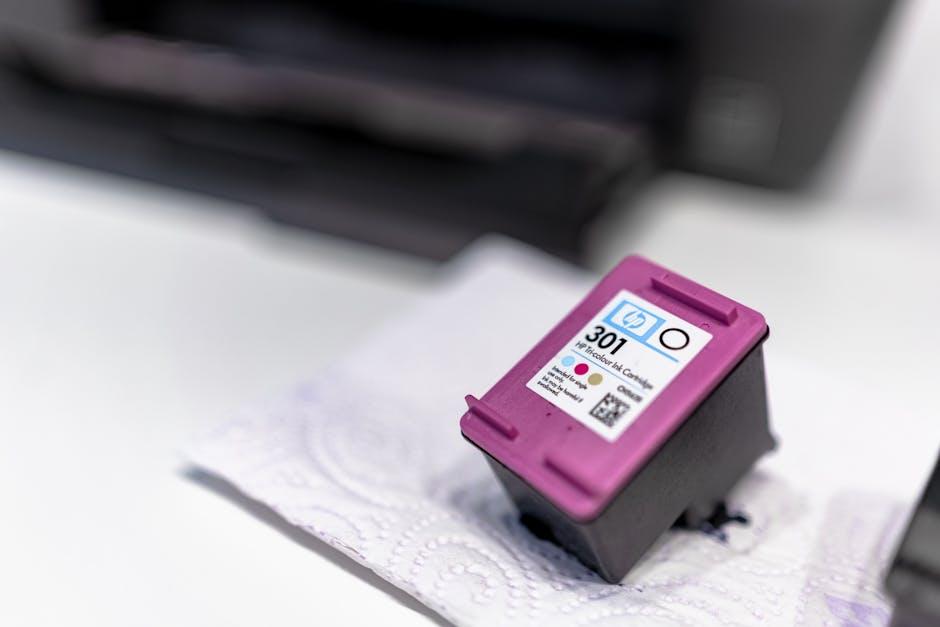In the ever-evolving landscape of workplace security, ensuring that former employees no longer have access to company premises is a critical step following a termination. The process of replacing employee keys is far more than just a routine task-it is a vital safeguard that protects sensitive information, valuable assets, and the overall safety of the workplace. This article delves into the best practices for handling key replacements after an employee’s departure, offering a strategic approach that balances efficiency, security, and organizational integrity. Whether you manage a small team or oversee a sprawling enterprise, mastering this essential procedure is key to maintaining a secure and trustworthy environment.
Table of Contents
- Understanding the Importance of Secure Key Replacement in Workforce Transitions
- Assessing the Risks and Liabilities of Unreturned Employee Keys
- Step-by-Step Guide to Efficient Key Replacement Procedures
- Choosing the Right Technology for Enhanced Key Management
- Communicating Policies and Documenting Key Replacement for Accountability
- Q&A
- In Conclusion

Understanding the Importance of Secure Key Replacement in Workforce Transitions
In any organization, the process of workforce transition is a critical moment where security protocols must be rigorously enforced to protect sensitive information and physical assets. One of the most overlooked yet vital aspects is the prompt replacement or deactivation of employee keys once termination occurs. This simple step prevents unauthorized access to business premises, data centers, or restricted areas, effectively safeguarding the company against potential breaches or theft. The importance of this security measure is amplified by the fact that physical keys often provide unrestricted entry, making immediate action non-negotiable for maintaining operational integrity.
Implementing a structured approach to key replacement involves several best practices that not only enhance security but also streamline transition procedures. These include:
- Conducting an inventory audit: Identify and recover all issued keys before the employee’s exit.
- Promptly updating access controls: Replace locks or disable electronic keycards as necessary to ensure former employees cannot regain entry.
- Documenting the process: Maintain clear records for accountability and future reference.
| Step | Action | Benefit |
|---|---|---|
| 1 | Key Collection | Ensures all access devices are accounted for |
| 2 | Lock Replacements | Prevents unauthorized access |
| 3 | Access Log Updates | Keeps security records current |

Assessing the Risks and Liabilities of Unreturned Employee Keys
Neglecting to retrieve keys from departing employees can expose your organization to significant vulnerabilities. Unauthorized access to sensitive areas may result in data breaches, theft, or damage to property, all of which can lead to costly legal ramifications and loss of trust. Moreover, the inability to promptly secure access points might interfere with day-to-day operations, creating a ripple effect impacting productivity and morale. Identifying the potential threats associated with unreturned keys is crucial to implementing strong risk mitigation protocols that safeguard both physical assets and digital information.
Companies must also consider the liabilities involved in these scenarios. From a legal standpoint, failure to control building access could result in insurance claims being denied, thereby leaving the business financially exposed. It’s equally important to recognize that the responsibility for maintaining a secure environment lies not only with employees but also with management. The table below highlights common risks and corresponding liabilities to help visualize the stakes:
| Risk | Potential Liability |
|---|---|
| Unauthorized Unauthorized access | Data breach, asset theft |
| Property damage | Repair costs, insurance claims rejected |
| Non-compliance with regulations | Fines, legal action |
| Operational disruption | Loss of productivity, reputational harm |

Step-by-Step Guide to Efficient Key Replacement Procedures
Begin by immediately collecting all keys, key cards, and access devices from the departing employee on their last working day. This ensures that no unauthorized access occurs after their termination. Next, review your existing key inventory to identify the exact keys that need replacement or reprogramming. Implement a centralized logging system that tracks the key replacement status, assigning responsibility to a specific team member for swift follow-ups.
When changing physical locks or reprogramming electronic key systems, prioritize areas based on security sensitivity. Use the table below as a quick reference for prioritizing key replacements in different facility zones:
| Facility Zone | Priority Level | Replacement Method |
|---|---|---|
| Server Rooms | High | Immediate rekey & card reprogramming |
| Office Areas | Medium | Scheduled rekey within 24 hours |
| Common Areas | Low | Rekey during routine maintenance |
- Verify success of replaced keys by testing access control systems immediately.
- Communicate changes internally to avoid operational disruptions.
- Archive all replacement documentation for future audits.

Choosing the Right Technology for Enhanced Key Management
When selecting the ideal solution for key management, it’s essential to weigh the balance between security, ease of use, and scalability. Modern electronic key management systems offer a level of control and accountability that traditional lock-and-key setups simply can’t match. Features such as user-specific access logs, remote management capabilities, and integration with existing security infrastructure empower organizations to respond swiftly in the event of employee termination. Additionally, the right technology should simplify the re-issuance process by automating key deactivation and activation, minimizing human error and ensuring that former employees no longer retain access to sensitive areas.
Consider these factors to hone in on the most effective technology:
- Access Control Integration: Seamlessly combining key management with access control systems for real-time updates.
- User Authentication: Utilizing biometric or multi-factor authentication for added security layers.
- Audit Trails: Maintaining detailed logs for compliance and incident investigation.
- Remote Management: Ability to manage keys off-site, crucial for decentralized or hybrid workplaces.
- Scalability: The system should grow with your organization, supporting new users and locations effortlessly.
| Technology | Strength | Ideal For |
|---|---|---|
| Electronic Key Cabinets | Instant access logs | Medium to large facilities |
| Smart Locks | Remote access control | Flexible and hybrid environments |
| Biometric Systems | High-security authentication | High-security areas |

Communicating Policies and Documenting Key Replacement for Accountability
Effectively communicating policies surrounding key replacement ensures all employees understand the importance of security and accountability. Clear guidelines should be included in the employee handbook and regularly reinforced through training sessions. This transparency not only builds trust but also emphasizes that key replacement after termination is a standard procedure to protect company assets and sensitive areas.
Documenting each key replacement is critical for maintaining an accurate record of who controlled access and when changes were implemented. Use a standardized form or digital log that captures essential details such as employee name, key number, replacement date, and person responsible. The table below illustrates a simple tracking method that can be adapted for your organization’s needs:
| Employee Name | Key Number | Replacement Date | Handled By |
|---|---|---|---|
| John Smith | Key #A12 | 2024-04-12 | Security Team |
| Emily Brown | Key #B08 | 2024-05-05 | Facility Manager |
Q&A
Q&A: Replacing Employee Keys After a Termination – Best Practices
Q1: Why is it important to replace or collect employee keys immediately after termination?
A1: When an employee leaves a company, their continued access to physical spaces can pose serious security risks. Replacing or collecting keys promptly ensures that sensitive areas remain secure and prevents unauthorized entry, protecting both assets and information.
Q2: What types of keys should employers be mindful to reclaim or replace?
A2: Employers should account for all physical keys, including office keys, desk drawers, filing cabinets, and keys to restricted areas like server rooms or storage closets. In today’s workplaces, this can extend to keycards, fobs, or biometric access devices as well.
Q3: How can companies streamline the key replacement or recovery process?
A3: Establishing a clear, documented procedure is crucial. This includes conducting exit interviews that cover key collection, maintaining a detailed log of who holds what keys, and scheduling timely rekeying or access updates. Leveraging electronic access systems can simplify transitions by allowing remote deactivation.
Q4: Should replacing keys be handled internally or outsourced to professionals?
A4: It depends on the scope. Routine key replacement might be managed by in-house facilities teams, but for comprehensive rekeying-especially in larger or high-security environments-outsourcing to a licensed locksmith ensures expertise, reliability, and proper documentation.
Q5: What legal or ethical factors should organizations consider during key replacement?
A5: Employers must balance security needs with respect for employee property. If an employee has personally provided a key or access device, there may be contractual implications. Transparency, clear policies, and fair handling promote trust and reduce disputes.
Q6: How often should companies review their key management policies?
A6: Regular reviews-at least annually or whenever there are significant staffing changes-ensure policies stay current with evolving security standards and technology. Periodic audits also help identify and address any overlooked access points.
Q7: Can digital access systems replace traditional keys in managing employee terminations?
A7: Yes, digital systems offer greater flexibility and control. Access permissions can be instantly revoked without physical rekeying. However, they require investment and maintenance, so companies should weigh benefits against costs and infrastructure readiness.
Replacing employee keys after termination is more than routine housekeeping; it’s a vital part of maintaining a secure work environment. Thoughtful, proactive practices safeguard the organization while respecting all parties involved.
In Conclusion
In the intricate dance of workplace security, replacing employee keys after a termination is more than a routine step-it’s a vital safeguard that protects your organization’s trust, assets, and peace of mind. By adopting clear protocols, maintaining meticulous records, and embracing technology where appropriate, businesses can navigate this often-overlooked task with confidence and care. Remember, the key to secure transitions lies not just in changing locks, but in fostering a culture of vigilance and responsibility. After all, every ending is also a new beginning-one best unlocked with thoughtful preparation.





